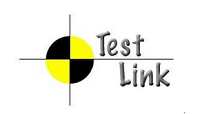Description

Kualitee

LabVIEW
Comprehensive Overview: Kualitee vs LabVIEW
Kualitee and LabVIEW are software tools used in different domains, serving distinct purposes and targeting varied user bases. Here's a comprehensive overview:
Kualitee
a) Primary Functions and Target Markets
- Primary Functions: Kualitee is a test management tool designed to assist software development teams in planning, executing, and tracking their testing processes. Its key features include test case management, defect management, requirements management, integration with popular issue trackers (like JIRA), and reporting/analytics capabilities. Kualitee aims to streamline the QA (Quality Assurance) workflow and enhance collaboration between development and testing teams.
- Target Markets: Kualitee primarily targets software development companies, QA teams, and IT departments across various industries. It is particularly useful for organizations that require robust testing procedures and efficient test management solutions to ensure software quality, including sectors like finance, healthcare, technology, and education.
b) Market Share and User Base
- Kualitee is a niche product focusing on the QA and software testing domain, thus catering to a specific segment of the software development market. Its market share is not as extensive as more generic software solutions but holds significant footing among companies that prioritize stringent testing and quality assurance processes.
- The user base includes small to medium-sized enterprises (SMEs) and larger organizations looking for specialized test management solutions. It has a dedicated user community primarily among testers and QA professionals.
c) Key Differentiating Factors
- Integration with Existing Tools: Kualitee offers seamless integration with popular issue tracking and project management tools such as JIRA, enhancing its utility in existing workflows.
- Ease of Use and Deployment: Designed to be user-friendly with an intuitive interface, Kualitee can be quickly adopted by teams without the need for extensive training or setup.
- Comprehensive Reporting: Provides detailed analytics and reporting features that enable teams to gain valuable insights into their testing processes and improve software quality over time.
LabVIEW
a) Primary Functions and Target Markets
- Primary Functions: LabVIEW (Laboratory Virtual Instrument Engineering Workbench) is a system-design platform and development environment focused on test, measurement, and control systems. Developed by National Instruments, LabVIEW is used for graphical programming primarily in engineering fields, allowing users to create systems using a visual language known as G. It offers capabilities in data acquisition, instrument control, automation, data analysis, and hardware integration.
- Target Markets: LabVIEW is targeted towards engineers and scientists in industries like automotive, telecommunications, aerospace, academic research, and electronics. It is widely used in R&D (Research and Development) laboratories, manufacturing, and test automation.
b) Market Share and User Base
- LabVIEW holds a prominent position in the market for engineering software, with a broad user base that spans educational institutions, research labs, and industrial sectors. It remains a popular choice due to its versatility in handling complex measurement and control tasks.
- Given its long-standing presence and reputation in the field, LabVIEW enjoys a significant market share within its niche, though it competes with other engineering and simulation software like MATLAB and Simulink.
c) Key Differentiating Factors
- Graphical Programming: LabVIEW’s graphical programming language allows users to design complex systems visually without needing deep coding skills, which is appealing to engineers and scientists who may specialize in domains other than software development.
- Hardware Integration: Significant strength in integrating with a wide range of hardware instruments for real-time data acquisition and control applications, making it ideal for applications that require tight integration between software and hardware.
- Extensive Libraries and Toolkits: Provides a vast array of built-in libraries and toolkits for various functions and industries, facilitating rapid development and deployment of custom applications.
Comparison
While Kualitee and LabVIEW serve very different purposes—Kualitee in the realm of software testing and LabVIEW in test, measurement, and control systems—they both streamline complex processes within their respective fields. The choice between the two depends largely on the specific needs of the task at hand: software development teams aiming to enhance QA processes versus engineers and scientists focusing on system design and data acquisition. Additionally, market dynamics such as user skill level, existing tool integrations, and application complexity play critical roles in selecting one over the other.
Contact Info

Year founded :
2018
+1 415-644-5060
Not Available
United States
http://www.linkedin.com/company/kualitee

Year founded :
Not Available
Not Available
Not Available
Not Available
Not Available
Feature Similarity Breakdown: Kualitee, LabVIEW
Kualitee and LabVIEW are distinct software solutions tailored to different domains. Kualitee is a test management tool primarily used in software development, while LabVIEW, developed by National Instruments, is a system-design platform and development environment focused on scientific and engineering applications. Despite their differing focuses, here’s a breakdown of their features and interfaces:
a) Core Features in Common
Both Kualitee and LabVIEW offer some overlapping features that cater to development and testing environments:
-
Project Management:
- Kualitee: Provides capabilities to manage software testing projects, including planning, tracking, and reporting.
- LabVIEW: While not a project management tool per se, it supports project organization through its project explorer that helps manage VIs (Virtual Instruments), libraries, and dependencies.
-
Reporting and Dashboards:
- Both tools offer reporting capabilities, allowing users to generate reports based on their data.
- Kualitee offers detailed test reports, bug trends, and other vital insights.
- LabVIEW provides data visualization and report generation capabilities, particularly for test results and system performance.
b) User Interface Comparison
-
Kualitee:
- The interface is web-based, focusing on ease of use and simplicity.
- It includes dashboards that display vital test metrics, status indicators, and quick navigation options for project management and test execution.
- Primarily menu-driven with a focus on test cases, bug tracking, and user management.
-
LabVIEW:
- Known for its graphical programming interface, where users create applications using block diagrams instead of traditional text-based coding.
- The interface consists of a front panel (for the user interface) and a block diagram (for coding), which requires an understanding of data flow concepts.
- More complex and requires some learning curve, especially for those not familiar with visual programming.
c) Unique Features
Kualitee:
- Integrated Bug Tracking: Offers a well-rounded bug tracking system where issues can be logged, tracked, and managed directly within the platform.
- Seamless Collaboration: Provides tools for team collaboration, allowing different stakeholders to participate in the testing process.
- Third-party Integrations: Supports integrations with popular project management tools like Jira, ensuring a smooth workflow across different software systems.
LabVIEW:
- Graphical Programming: Its primary unique feature is the visual programming environment optimized for engineers and scientists who may not be traditional software developers.
- Hardware Integration: Extensive support for various hardware interfaces and the ability to control hardware directly, making it ideal for test, measurement, and automation tasks.
- Simulation and Prototyping: Offers advanced capabilities for real-time simulation and rapid prototyping, particularly beneficial in experimental and research applications.
In essence, while there are core similarities in terms of project management and reporting capabilities, their unique features distinguish them significantly, aligning with their specific use cases and target users.
Features

Not Available

Not Available
Best Fit Use Cases: Kualitee, LabVIEW
Kualitee and LabVIEW are both powerful tools, but they cater to different needs and industries. Here's a breakdown of their best fit use cases:
Kualitee
a) For what types of businesses or projects is Kualitee the best choice?
Kualitee is a test management tool designed primarily for software development and quality assurance teams. It is particularly well-suited for:
-
Software Development Companies: Kualitee is ideal for organizations that need to manage extensive software testing processes, including manual and automated testing. It supports Agile practices and can integrate with other tools like JIRA, providing seamless workflow management.
-
Quality Assurance Teams: Businesses with dedicated QA teams that require a comprehensive test management solution for tracking, managing, and reporting on test cases and defects would benefit from Kualitee.
-
Consulting Firms: IT consulting companies that offer software testing services for multiple clients can use Kualitee to organize and compartmentalize test projects efficiently.
-
SMEs to Large Enterprises: Organizations looking for scalable solutions for test management can use Kualitee as it offers both flexibility for small teams and robustness for larger enterprises.
d) How do these products cater to different industry verticals or company sizes?
Kualitee caters to a variety of industry verticals in tech, finance, healthcare, and more, where regular software releases and testing are critical. Its pricing model and cloud-hosted nature make it accessible for small businesses while scalable enough to manage extensive enterprise projects.
LabVIEW
b) In what scenarios would LabVIEW be the preferred option?
LabVIEW (Laboratory Virtual Instrument Engineering Workbench), developed by National Instruments, is a system-design platform and development environment for a visual programming language. It is best suited for:
-
Research and Development (R&D): Ideal for R&D labs in industries like aerospace, automotive, telecommunications, and academic research, where tailored instrumentation and data analysis are needed.
-
Manufacturing and Production Testing: Companies looking to automate and streamline production testing, integrate hardware with software, and perform complex measurements can benefit from LabVIEW’s capabilities.
-
Engineering Firms: Especially those working with signal processing, control systems, or designing and testing electronic systems where custom instrumentation is required.
-
Prototyping and Design Validation: LabVIEW is excellent for rapid prototyping and iterative design processes, often used in test rigs and custom testing equipment setups.
d) How do these products cater to different industry verticals or company sizes?
LabVIEW is heavily utilized in industries that require precise data acquisition, automation, and hardware integration, such as electronics, biotechnology, and manufacturing. It serves a broad range of company sizes, from small labs that need custom measurement solutions to large enterprises implementing complex automation systems. Its modular approach allows scalability and customization according to industry-specific needs.
Overall, while Kualitee is tailored towards the software development life cycle, focusing on test case management and bug tracking, LabVIEW is a robust solution for environments that require intricate hardware-software integration and data measurement capabilities. Both tools excel in their respective domains, offering features that cater to both small and large organizations in varied industries.
Pricing

Pricing Not Available

Pricing Not Available
Metrics History
Metrics History
Comparing teamSize across companies
Conclusion & Final Verdict: Kualitee vs LabVIEW
When comparing Kualitee and LabVIEW, it's important to recognize that they serve different primary purposes and target audiences. Kualitee is a test management tool aimed at improving software development processes, enhancing defect management, test planning, and execution. LabVIEW, on the other hand, is a system-design platform and development environment focused on the needs of engineers and scientists, particularly for applications that require test, measurement, and control with a graphical programming approach.
Conclusion and Final Verdict:
a) Considering all factors, which product offers the best overall value?
The best overall value depends significantly on the user's specific needs and industry. For software development teams focused on efficient test management, defect tracking, and collaborative test execution, Kualitee provides comprehensive features tailored to these requirements, offering significant value. Conversely, for engineering and scientific applications requiring complex data acquisition, instrumentation control, and a graphical programming approach, LabVIEW offers unparalleled value. Hence, neither product is superior overall; rather, they are the best in their respective domains.
b) Pros and Cons of Choosing Each Product:
Kualitee:
-
Pros:
- Tailored for software testers and QA teams, facilitating comprehensive test management and defect tracking.
- User-friendly interface and easy integration with common development tools like Jira.
- Supports collaborative work with clear communication and reporting features.
-
Cons:
- Primarily focuses on testing and quality assurance; not suitable for engineering measurement or control applications.
- May require integration with other tools for complete development lifecycle management.
LabVIEW:
-
Pros:
- Excellent for applications involving data acquisitions, such as hardware-in-the-loop simulations, automated measurements, and system control.
- Offers a graphical programming environment which can simplify code visualization and development of complex applications.
- Integrates well with National Instruments hardware and other measurement devices.
-
Cons:
- Steeper learning curve for those unfamiliar with graphical programming paradigms.
- Can be costly, particularly for teams or individuals not leveraging its full capabilities.
- Primarily focused on engineering and scientific applications, thus limited for standard software testing.
c) Recommendations for Users Trying to Decide Between Kualitee vs LabVIEW:
-
Assess Your Project Needs: If your project revolves around typical software development cycles with a strong emphasis on testing, quality assurance, and defect tracking, Kualitee is the appropriate choice. However, if your project is engineering-centric, involving intensive data measurement and control environments, consider LabVIEW.
-
Consider Team Expertise: Ensure your team has the necessary skills for the chosen platform. LabVIEW requires familiarity with graphical programming and understanding of hardware integration, while Kualitee benefits from experience in software testing methodologies.
-
Budget Considerations: Evaluate the cost implications and ensure alignment with your budget. LabVIEW could be a significant investment if its advanced features aren't fully utilized. Kualitee may present a more budget-friendly option for software QA activities.
-
Integration Requirements: Consider the ecosystem of tools you currently use and how well each product integrates with them. Kualitee integrates smoothly with software development tools, whereas LabVIEW thrives within an engineering lab setup.
Ultimately, the decision is contingent upon the specific requirements of your project and the domain you're operating in. Each tool has distinct advantages suited to particular types of work, so choose the one that aligns most closely with your overarching goals.
Add to compare
Add similar companies



